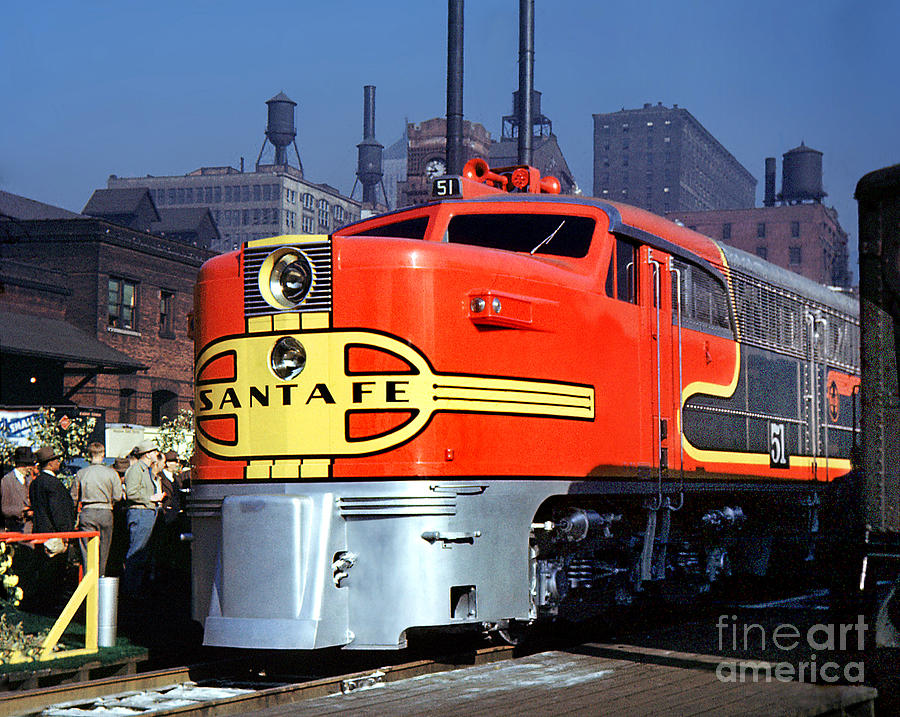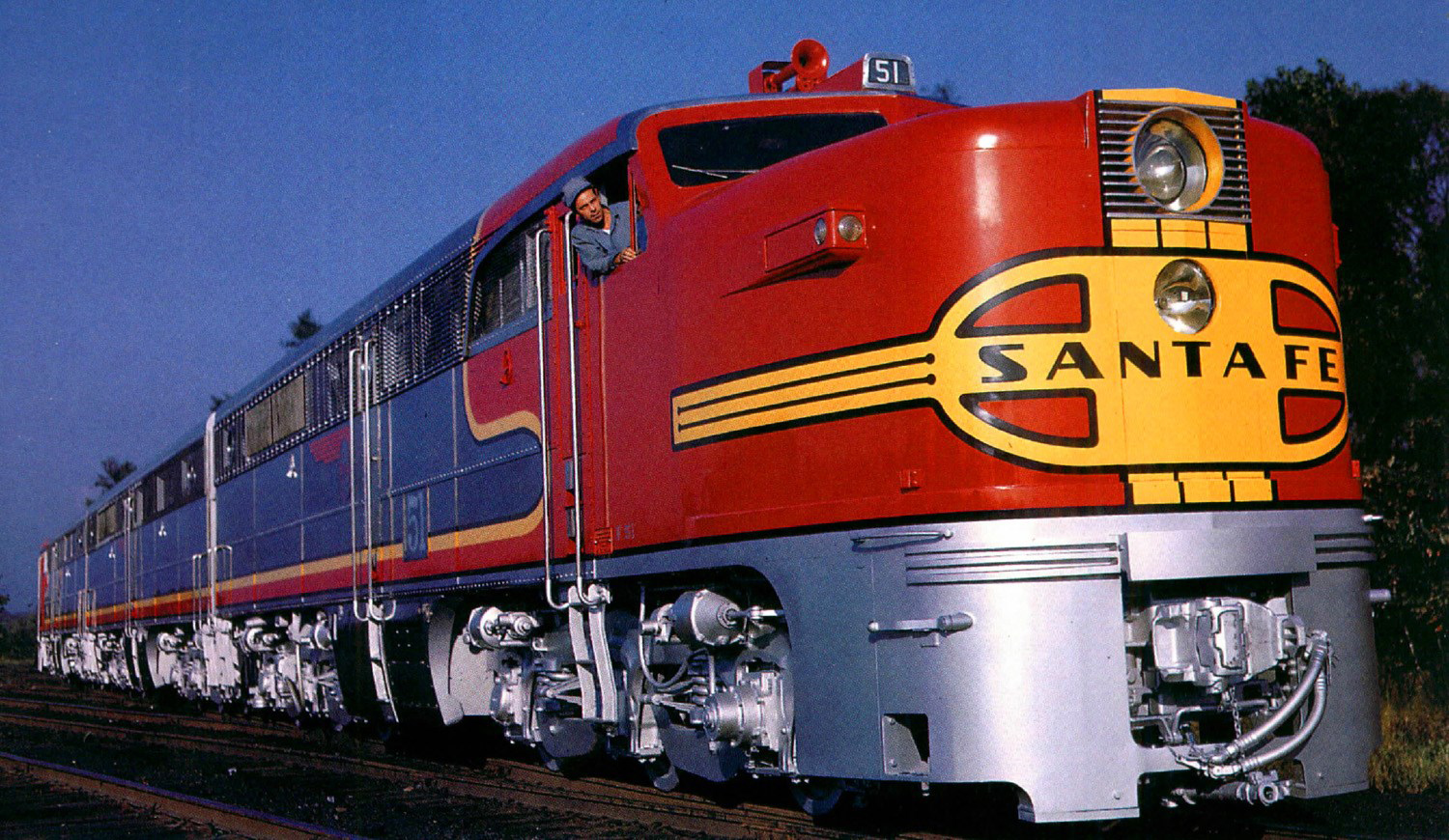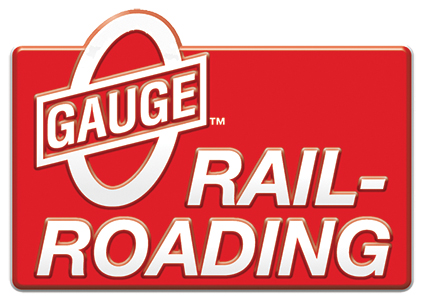Replies sorted oldest to newest
Very nice. I've also been posting about my Sunset/3rd Rail New Haven ALCO PA1 and agree this is an exceptional model, although I have come to expect this kind of product from Sunset.
MELGAR
Very nice indeed.
Great photos and many thanks. I will get my ABA on Monday. Looking forward to that !! Most of my major additions have been GGD. Simply incomparable in everything they do.
Scrapiron
marty track posted:
Nice engines. Never realized the batten straps and side door were not stainless steel like the panels.
Still can't figure out why Lionel placed a white background behind the Chief herald on theirs. ![]()
Attachments
So does anyone know if those silver painted battens should be there?
BobbyD posted:So does anyone know if those silver painted battens should be there?
Should be stainless steel.
Rusty
Attachments
I see in the prototype photos there is an appliance on the rooftop that does not appear on the model and that the side housing of the marker light shows glass where the model is enclosed in red. Are these differences due to model year/changes?
I see in the prototype photos there is an appliance on the rooftop that does not appear on the model and that the side housing of the marker light shows glass where the model is enclosed in the red plastic housing. Are these differences due to model year/changes?
Attachments
The "platform" by the horns is the radio antenna. I think those started appearing in on the Santa Fe PA's the 1960's. There were always class light lenses to the front and side whether the numberboards were blanked out or not.
Rusty
Attachments
It’s a beautiful model Marty ![]()
Red paint seems pretty flat.




A grab shot of mine last night with my cell phone taken without a flash in low light. The color is correct. Yes a few minor, but relatively easy things to fix. I will be placing the 2-rail pilot on my lead unit. Taking real photos of both this and my PRR one this weekend.

Attachments
I just noticed the curve n the rain gutter looks odd
Wow what a fantastic model! Very nice you must be proud!
I would concur that red seems 'flat' to me as well. Same with the Atlas F units. Much prefer something akin to this one.

Don't like the flat red (that everyone seems to do) and slightly pinkish to my eye. Opinion. Wish someone could give us a WB with a proper red. Perhaps a little shine to go with the stainless panels (which everyone seems to do now). Things are getting better.
They look great to me! Hey maybe ask atlas about making them, they'll have them ready in 35 years ![]()
SANTIAGOP23 posted:They look great to me! Hey maybe ask atlas about making them, they'll have them ready in 35 years
no more like 3535 if man is still alive oh oh .
I love mine, I thought the red could use a bit more sheen to it but they look great. I wasn't around to see them in real life but my understanding is that the paints back then just didn't have the gloss of the paints today
Matt Makens posted:I thought the red could use a bit more sheen to it but they look great. I wasn't around to see them in real life but my understanding is that the paints back then just didn't have the gloss of the paints today
Seems clear the real ones still had considerably more gloss and richness of red color than the 3rd rail paint. High end brass models do, too (and that photo was taken in low light).
(The 3rd rail model shown at bottom.) What matters most is what the owner thinks, though, regardless, and if they're happy with it.




Attachments
Paint: PAs's were painted with Dupont Duco lacquer which quickly reduced from gloss to a dull sheen when exposed to sun, wind and wash chemistry. The trucks and pilots were painted with Dulux enamel. This paint looks real to me for 1950 to 1958, when radios were added and Leslie chime airhorns began to replace the Wabcos.. And the curvature of the warbonnet strip is perfect. Raise a glass to Jonathan for that.
Santa Fe changed the tint of the red in the late 1940's. Didn't everybody know that?
There had to be a few oversights. The battens and engine room doors should have been stainless steel to be perfectly authentic. And the painted-over class light on the side allows light to show through. The real class light shone to the front and the side, same color. Probably, it would have been best to not insert an LED in the class lights, as these are passenger engines and usually ran on regular trains with no class lights displayed. That would have taken care of that oversight. You can snip the wires to the class lights. Hot Water does it. And I noticed two more small oversights that most modelers will not even recognize, and I will not identify them and stir up complaints about mostly nothing.
Overall, these are really nice engines and worth the $700 each. I would say that nobody will look at the battens or the class lights when these beautiful models pass by on the head end of a passenger train. And they really start and stop smoothly.
Nice work, Scott. Thanks for all the effort.
I found that Scale Coat ATSF Warbonnet red was identical to their SP Daylight red - an ever-so-slightly muddy red. Tell us more about this color change that everybody but me knows all about?
By the way, excellent photos. Thanks to all of you. I really like the Overland shots - I have the PRR versions. The ATSF are far better looking.
Number 90 posted:Paint: PAs's were painted with Dupont Duco enamel which quickly reduced from gloss to a dull sheen when exposed to sun, wind and wash chemistry.
Perhaps if the engines are being made to look like they have weathered red paint, then rest of the engine should be made with a weathered appearance as well.
Some folks like the weathered look, but I like engines to look like they did before they had road wear. Just personal preference.
bob2 posted:Tell us more about this color change that everybody but me knows all about?
Of course you realize that I was being facetious. In reality very few living people are aware of it. There was a change in the red tint. Less orange, more red. All the rednoses lasted long enough to wear the "new" red, even the FT's.
The red on the Sunset locos looks like the way I remember them in the '50's. The stainless steel did not "weather" as it was washed very often. The gloss just disappeared off of the lacquer red paint due to exposure, plus washing with mild acid.
Alcos make soot, and gravity lands it on the horizontal surfaces. Also, the black, oily exhaust of fond memory contained fuel, oil, and soot, and it clung to the locomotives. Though they were washed very frequently, and were kept pretty clean, they were not clean enough to eat off of. Study action photos. At the end of their careers, some Alcos were stuck in a Texas-New Mexico cycle and got dirty between good washings. But that was at the end.
Awesome data number 90 Tom. And Johnathan and Scott awesome job on this beauty!
If one so desired, they could spray their model with a satin clear coat like Rust-Oleum or Krylon. That will bring out more richness in the deeper colors and give the loco that glossy look everyone wants. In all my dads photos they are not that glossy.
Ive got photos of the Alcos at the end of their career on the Santa Fe pulling freight. so in the 60's they were relegated to wherever they were needed
I see an interesting pattern developing here. Those who have them love them. Those who do not want to nitpick. Hmm...jealously? I love mine and they will look fantastic pulling my El Capitan regardless. Left my pro camera at work but cell phone selfies in natural light. I couldn't be happier.
Attachments
Jonathan, does that red and white bell wire in the foreground match the prototype?
It does on my disassembled modular layout! New place with no place for my layout but I'll be taking pictures next time I'm at my club. :-)
Im just nitpicking, everybody else has the model covered
Jonathan, yours do indeed look slightly richer than the original one posted below. Most likely the difference in lighting. I like yours but would be somewhat unhappy with this one if they were indeed different!

Jonathan's here

Attachments
Trying to gauge color accuracy from digital cameras or printed matter will drive you crazy. But, if you have a correct color swatch (We use Tru-Color Paint), you can easily see the slightest difference in hue or brightness from swatch to production sample. That is how we match our colors at the factory. Take a digital photo of the swatch next to the production sample in the same picture with the same lighting.
All these SF PAs were painted from the same batch of paint at the same time. There is no variation from one model to the next, but there seems to be differences due to lighting and camera settings. The model in Chicago came right out of the box from our shipment.
Scott
Attachments
Anyone read the publication from the Modeling and Historical Society? The red was changed 2 times from the original orange tint used on the first E units until the final deep red that was seen on the Super Fleet locomotives. Tru-Color and Scalecoat II are excellent ATSF reds. I have used them both and are very very similar.
I didnt buy these but I wish I would have. I just dont have any place to run trains any more.
I think they look great! They sit nice and low too. An ABA sure would look awesome pulling a San Diegan 😉
Just my opinion here but they would look a lot better with glossy red santa fe post war paint. That is what red i have always liked .
Scale models are not painted to an opinion, they’re painted to the prototype. I think they look great, so do my F7s which. Have the same paint.
If that is prototypical i will take your word on it. I have no clue.
These were painted to paint sample from Trucolor Paint. Modern paint chemistry has significantly different properties than paints from the 1950’s and 1960’s and as Number 90 states the gloss properties probably didn’t kart very long Co Jared to paints available today.

















































